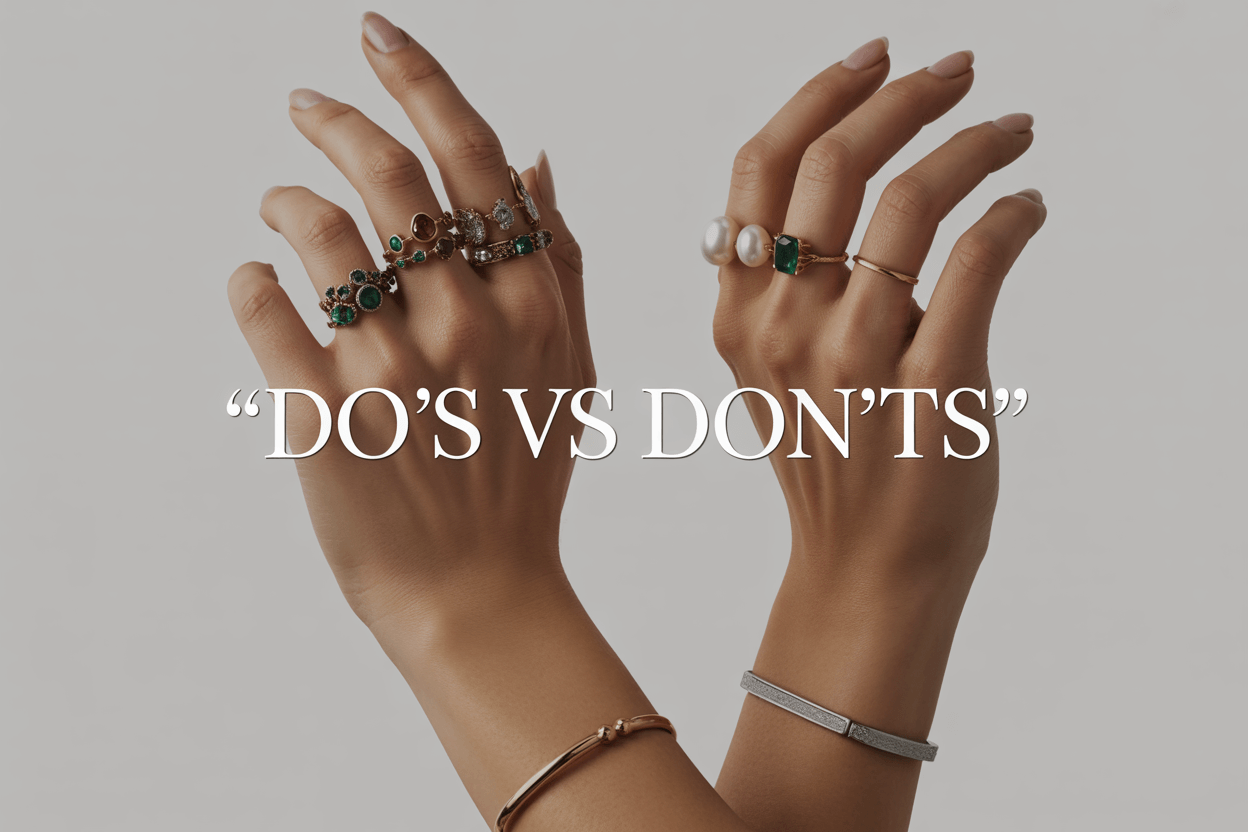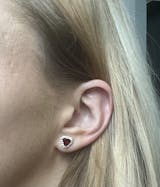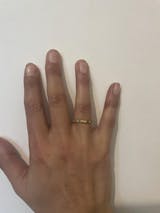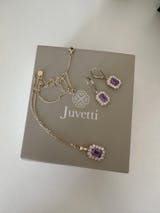
5 Red Flags to Watch Out for When Buying an Emerald Ring (What Jewellers Don't Tell You)
Table of Contents: Inside this Article
...When it comes to purchasing an emerald ring, that alluring green gemstone can quickly captivate your heart, but not all emeralds deserve your investment. Without proper knowledge, you risk overpaying for inferior quality or falling victim to outright deception. This guide by one of the best London Jewellery stores reveals the five critical red flags that could save you from emerald buying regret. By the time you finish reading, you'll have the confidence to distinguish a worthy investment from a costly mistake.
Red Flag #1: Too-Clear Emeralds at Suspiciously Low Prices (What It Really Means)
Natural emeralds almost always contain inclusions —known in the trade as "jardin" (French for "garden"). These natural characteristics are part of what makes each stone unique.
Be immediately suspicious of exceptionally clear stones offered at surprisingly low prices. This combination often indicates:
-
Synthetic emeralds are being misrepresented as natural
-
Glass-filled stones with excessive treatments masking poor quality
-
Green glass or cubic zirconia simulants falsely marketed as genuine emeralds
A high-clarity natural emerald commands premium prices for good reason—they're extraordinarily rare. At Juvetti, our gemologists carefully select each stone for "vivid colour saturation and optimal clarity," ensuring genuine quality.
What's acceptable? Moderate inclusions that don't significantly affect the stone's brilliance are typical in natural emeralds. Lab-grown emeralds typically have fewer inclusions but should be clearly disclosed and priced accordingly.
Always request proper certification from reputable gemological laboratories or choose established jewellers like Juvetti Bespoke Jewellery London, which prioritises transparency.
Red Flag #2: Undisclosed Emerald Treatments (Why Sellers Hide This Information)
Nearly 99% of natural emeralds undergo some treatment, most commonly oil enhancement. This centuries-old practice isn't problematic when disclosed, but secrecy about treatments should raise immediate concerns:
-
You may overpay for a heavily treated stone worth significantly less
-
You might purchase an emerald requiring special care due to its treatments
-
The seller's lack of transparency often extends to other aspects of the stone
Specifically ask about oil or resin treatments. Reputable jewellers will readily share whether treatments are minimal, moderate, or significant. At Juvetti, we believe in full transparency about our sustainable, lab-grown emeralds that require minimal enhancement.
A seller who deflects questions about treatments or uses vague terms like "enhanced using traditional methods" without specifics is waving a red flag you shouldn't ignore.

Red Flag #3: Vulnerable Emerald Settings That Compromise Durability (Spot The Difference)
Emeralds rank 7.5-8 on the Mohs hardness scale—considerably softer than diamonds (10) and sapphires (9). This relative softness makes emeralds vulnerable to chipping, especially along their edges.
Watch for settings that leave emeralds exposed to daily hazards:
-
Tall prong settings that elevate the stone far above the band
-
Thin, fragile prongs that provide insufficient security
-
Tension settings where the stone could be dislodged by impact
A premium price paired with a fragile setting should immediately raise concerns. Quality emerald jewellery features protective elements that ensure longevity while maintaining beauty.
Safer setting options include:
-
Bezel settings that wrap metal around the emerald's perimeter
-
Halo designs where smaller stones protect the central emerald
-
Sturdy prong settings with thicker metal and rounded edges
Juvetti's Ring Collection showcases emerald settings designed to balance aesthetics with practical protection. Once you've chosen the perfect setting, learn how to properly care for your emerald ring to ensure it remains beautiful for generations.
Red Flag #4: Missing Certification for Natural Emeralds (What Sellers Are Hiding)
When investing in an emerald ring, proper documentation isn't optional—it's essential for verifying:
-
The stone's authenticity
-
Quality characteristics (colour, clarity, cut)
-
Treatment disclosures
-
Origin, which significantly affects value
Planning an emerald engagement? Explore how emerald rings represent a modern symbol of sustainable love.
Reputable sellers provide certification from recognised gemological laboratories such as:
-
Gemological Institute of America (GIA)
-
International Gemological Institute (IGI)
-
American Gem Society (AGS)
-
SSEF Swiss Gemmological Institute
You can also read GIA's overview on emeralds to better understand how quality and origin impact value.
Equally important is a clear, written return policy. The absence of a reasonable return window (typically 14-30 days) suggests the seller fears closer examination might reveal undisclosed issues.
At Juvetti, we provide comprehensive documentation for all our ethical, lab-grown gemstones, allowing you to make truly informed decisions about your investment in sustainable luxury.
Red Flag #5: How to Spot Fake Emerald Marketing Claims (Buzzwords Without Evidence)
Be wary of sellers who liberally use impressive-sounding terminology without supporting evidence:
-
"AAA quality emerald"
-
"Investment-grade gemstone"
-
"Rare Colombian specimen"
-
"Museum-quality clarity"
Without corresponding certification, these descriptions are merely marketing language. Particularly suspect are unspecific grading systems like "AAA" that have no standardised industry definition.
Documentation must always be requested for claims about geographic origin, especially desirable sources like Colombia. Origin significantly impacts value, with Colombian stones typically commanding higher prices due to their vivid green colour with subtle blue undertones.
As Juvetti's founder, Nano, explains: "Ethical practices and transparency are close to our hearts. We want our customers to have peace of mind at every step of our jewellery-making process." This commitment to honesty should be expected from any reputable jeweller offering different styles of emerald rings for your consideration.
Essential Questions to Ask When Buying Certified Emerald Rings
Protect yourself by asking these direct questions before purchasing:
-
Is this stone natural or lab-created? (Both can be beautiful, but should be correctly represented.ed)
-
Has it been treated? With what specifically, and to what extent? (Oil, resin, or other enhancements)
-
Is it certified? By which laboratory? (Request to see the actual certificate)
-
What exactly is your return policy? (Get it in writing)
-
Can I inspect the ring setting under magnification? (To check craftsmanship quality)
-
How should I care for this specific emerald? (Based on its treatments and setting)
When purchasing from ethical jewellers like Juvetti, these questions are welcomed rather than avoided, as they demonstrate your knowledge and serious interest in making a quality investment.
Conclusion: Buy Natural vs Lab-Grown Emeralds With Confidence
The journey to finding your perfect emerald ring doesn't require a gemology degree—just awareness of these key red flags and the confidence to ask the right questions. A reputable jeweller values educated customers and will appreciate your diligence.
By remaining vigilant about unrealistic clarity, undisclosed treatments, poor settings, missing certification, and unsubstantiated claims, you'll protect yourself from costly disappointments and ensure your emerald purchase brings lasting joy.
For those seeking both beauty and ethical assurance, Juvetti's collection offers lab-grown emeralds that match the chemical structure and allure of natural stones without the environmental concerns of mining. Each piece is individually handcrafted to exacting standards, providing the perfect balance of luxury and sustainability for the discerning buyer.
FAQS About Buying Emerald Rings
What exactly is an "oiled emerald"?
Oiling is a traditional enhancement where natural oils or resins fill microscopic fissures in an emerald, improving clarity and stability. This centuries-old practice is accepted when properly disclosed. The treatment may need renewal every few years, especially with frequent wear.
Is "AAA quality" a legitimate emerald grading?
No—unlike diamonds with standardised 4c grading, emeralds have no universally accepted lettering system. Terms like "AAA" are marketing designations without industry standardisation. Always look for specific descriptions of colour, clarity, cut, and treatments rather than arbitrary letter grades.
Are lab-grown emeralds worth buying?
Lab-grown emeralds offer numerous advantages: ethical sourcing, consistent quality, and typically fewer inclusions than natural stones. They have an identical chemical composition to natural emeralds, but often at more accessible prices. Their value lies in both beauty and sustainability, making them excellent choices for environmentally conscious buyers.
How can I tell if an emerald's colour is natural?
Natural-coloured emeralds display colour zoning under magnification—subtle variations in colour concentration throughout the stone. Suspicious signs include overly vibrant hues with perfect uniformity or unusual colours like neon green. Certification from reputable labs can confirm whether the colour is natural or enhanced.
What should I expect to pay for a quality emerald ring?
Natural emeralds of fine quality typically range from £1,500-£5,000 per carat for the stone alone, with settings adding additional cost. Lab-grown emeralds of comparable visual quality typically range from £500-£2,000 per carat. Always remember that unusually low prices for supposedly fine emeralds are a primary red flag.







